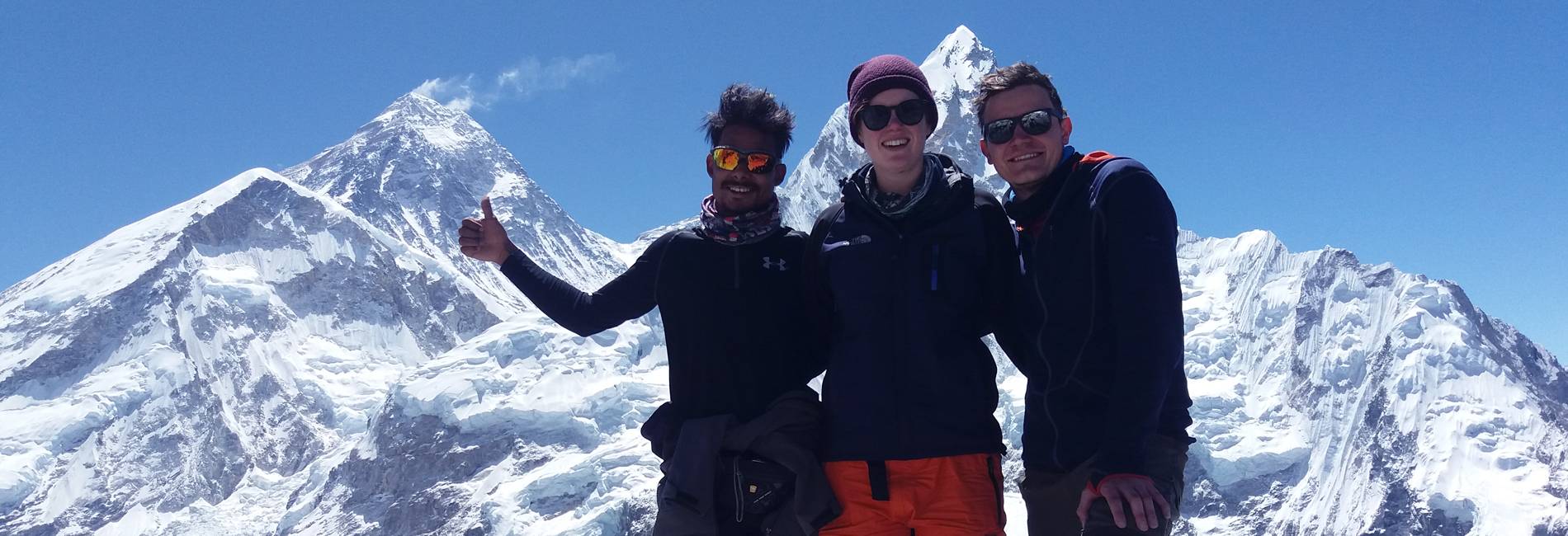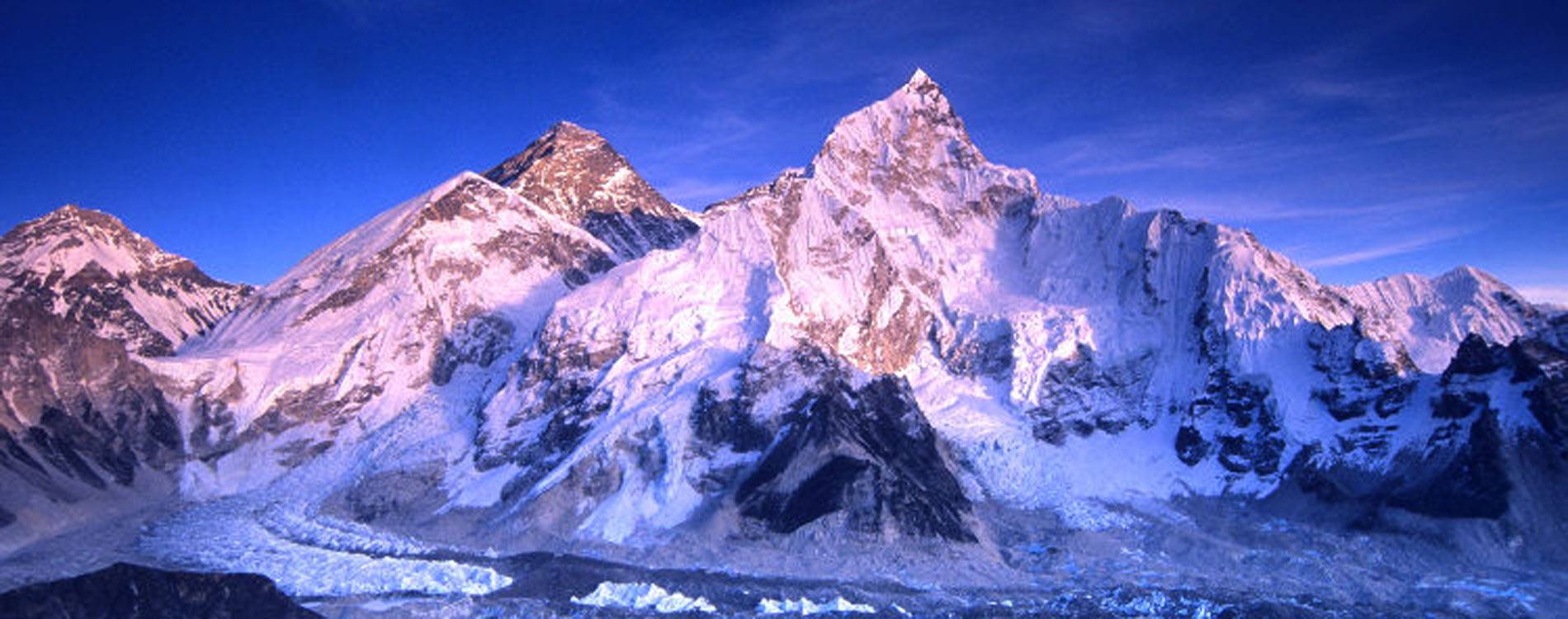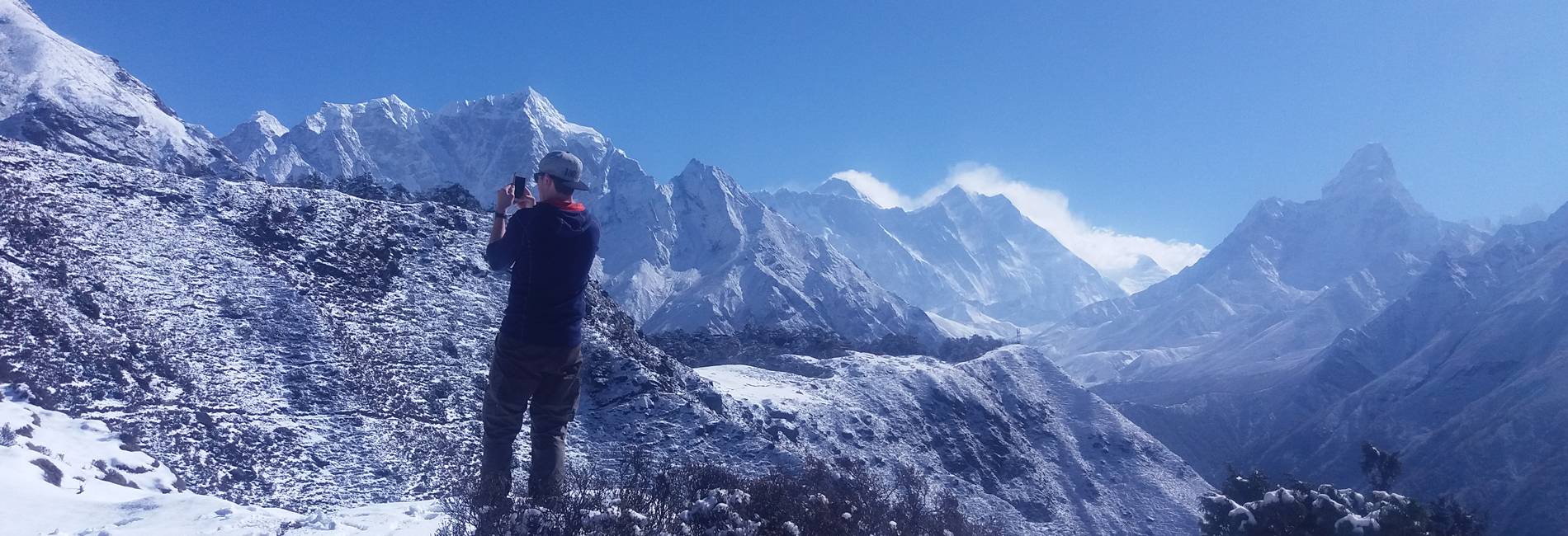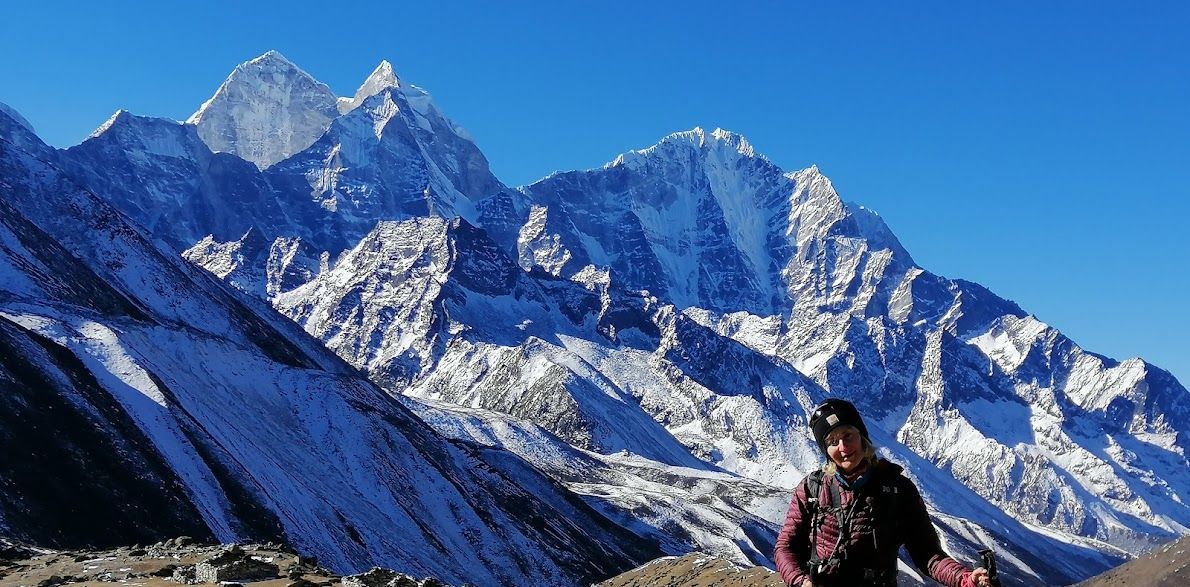26th August, 2025

May 19, 2025
What Level of Fitness Is Needed for Everest Base Camp?
The Everest Base Camp trek is one of the most iconic and rewarding trekking routes in the world, attracting thousands of adventure seekers every year. However, it is also a physically demanding journey that requires a good level of fitness to ensure a successful and enjoyable experience. While you don't need to be a professional athlete to complete the trek, it's important to understand what level of physical fitness is necessary to tackle this challenging route.
The trek to Everest Base Camp involves hiking for 5 to 8 hours per day over a period of 12 to 14 days, with steep inclines and uneven terrain. In addition to the long hiking hours, trekkers must also contend with altitude and the thinner oxygen levels that come with it. Therefore, both cardiovascular fitness and muscular endurance are crucial for this trek. The key to preparing for the Everest Base Camp trek lies in building up stamina, strength, and mental resilience to handle both the physical demands and the effects of high altitudes.
To prepare physically, cardiovascular endurance should be your primary focus. A good level of aerobic fitness is necessary to keep you moving throughout the day. Running, cycling, swimming, or brisk walking on incline trails will help you build stamina. Cardiovascular training increases your lung capacity, enabling you to handle the decreasing levels of oxygen as you ascend to 5,364 meters (17,598 feet). While cardio is essential, it is equally important to train for muscular endurance. Building strength in your legs, core, and lower back will prepare your body for the steep ascents, descents, and uneven surfaces that are part of the trek. Exercises such as squats, lunges, step-ups, and deadlifts will improve leg strength and reduce the risk of fatigue or injury.
Another important aspect of preparation is mental stamina. The trek to Everest Base Camp is not just physically demanding, but also mentally challenging. The journey involves long days of trekking in sometimes harsh weather conditions, and you’ll often face physical exhaustion. Developing a positive mindset and the ability to push through tiredness is just as important as physical fitness. You can improve mental toughness by engaging in mindfulness, meditation, or practicing visualization techniques that help you stay focused and motivated.
While cardiovascular and muscular endurance are critical, training your body for the specific conditions of the Everest Base Camp trek is equally important. Hiking with a loaded backpack on uneven terrain, simulating the actual conditions you’ll face, will help your body adapt. Try to practice hiking uphill or on steep trails, gradually increasing the weight of your backpack as your fitness improves. A realistic training program should include at least 3 to 6 months of preparation, depending on your current fitness level.

EVEREST BASE CAMP TREK
Cross this off your “bucket list” – a “dream come true experience”Everest is the ultimate goal of many people and those who had already been there rating it as one of the best experiences of their liv...
It's important to note that the trek to Everest Base Camp is non-technical, meaning you don’t need any climbing skills or specialized gear. However, it still requires a high level of fitness, especially when trekking at high altitudes. Trekking at elevations above 3,000 meters can lead to altitude sickness if you don't allow your body to acclimatize properly, which makes fitness preparation even more important.
In summary, while you don’t need to be an elite athlete to do the Everest Base Camp trek, you do need to prepare your body for the physical and mental demands it presents. A combination of cardiovascular training, strength building, and mental resilience will set you up for success. The better prepared you are, the more you’ll be able to enjoy this incredible journey, both physically and mentally, as you experience the breathtaking views of the Himalayas and reach the foot of the world's highest peak.
Introduction: Understanding the Physical Demands of Everest Base Camp
The Everest Base Camp trek is one of the most physically demanding and exhilarating journeys you can take. Covering a distance of approximately 130 kilometers round-trip, the trek involves ascending to altitudes of over 5,364 meters (17,598 feet) while navigating steep terrain, rocky paths, and changing weather conditions. Understanding the physical demands of the EBC trek is essential for anyone planning to undertake this adventure. While it’s not a technical climb, the route requires a high level of physical endurance, mental fortitude, and proper acclimatization. The combination of long trekking hours, elevation changes, and limited oxygen levels requires preparation in several key areas of fitness. Whether you're new to hiking or a seasoned trekker, ensuring that you are well-prepared for the high-altitude conditions and physical challenges will not only improve your chances of success but also enhance your overall experience. This trek demands cardiovascular stamina, leg strength, mental toughness, and flexibility, all of which must be trained before you embark on your adventure to reach Everest Base Camp.
Cardiovascular Endurance for Everest Base Camp
When preparing for the Everest Base Camp trek, cardiovascular endurance is one of the most important aspects of fitness to focus on. The trek involves long days of continuous hiking, often for 5 to 7 hours per day at altitudes where oxygen levels are significantly lower. This can place considerable strain on your cardiovascular system. To build the necessary endurance, include activities like running, cycling, swimming, or brisk walking in your training routine. Start with moderate sessions and gradually increase the intensity and duration over time. This will improve your stamina and lung capacity, making it easier to breathe at higher altitudes. Cardiovascular training will help you manage the effects of altitude sickness, as your body will be more efficient at utilizing oxygen. Incorporate interval training into your routine to build strength and endurance for long-duration activities. Additionally, practicing hiking at inclines will better simulate the terrain you’ll face during the trek. The better your cardiovascular fitness, the more enjoyable your Everest Base Camp experience will be, allowing you to focus on the stunning views and not on your physical limitations.

EVEREST THREE PASS TREK
Imagine yourself surrounded by snow-capped mountains, alpine glaciers & a chance to see snow leopards, musk deer & red panda.The Sagamartha National Park has been one of the most popular desti...
Strength and Muscular Endurance for High Altitude Trekking
Strength and muscular endurance are vital for trekking at high altitudes like Everest Base Camp. Trekking involves repetitive weight-bearing activity over steep terrain, and having the strength to manage these demands will reduce fatigue and the risk of injury. Focus on strengthening your legs, core, and upper body. Leg strength is essential for navigating long ascents and descents, particularly when carrying a backpack. Exercises like squats, lunges, and step-ups will help build the necessary strength for your legs. The core is equally important for maintaining stability and posture over long hikes, so include exercises like planks, Russian twists, and leg raises in your routine. Upper body strength also plays a key role in carrying your gear and maintaining proper form during the trek. Use exercises such as push-ups, pull-ups, and dumbbell rows to build strength in the arms and shoulders. Muscular endurance helps you carry your weight efficiently without tiring too quickly, so train for sustained effort, gradually increasing the weight and intensity of your workouts to mimic the physical load you’ll carry during the trek.
Hiking and Uphill Climbing Ability
One of the most significant physical demands of the Everest Base Camp trek is the ability to handle long-distance hiking and steep uphill climbs. The trail involves substantial elevation gains, with some sections of the trek including sharp ascents. Training for uphill climbing is essential to ensure that your legs and cardiovascular system can handle these challenges. Begin by hiking on hilly terrain or inclined treadmill workouts to simulate the trail conditions. Start with shorter hikes, gradually increasing both the incline and duration as your fitness improves. Incorporating stair climbing or step exercises will also help develop your quadriceps and glutes, which are essential for uphill movement. As you prepare, carry a backpack to simulate the load you will be carrying on the actual trek. This will help improve your ability to move efficiently and build your muscular endurance. Additionally, train your body to recover quickly after steep climbs, ensuring you maintain a steady pace on the day of the trek. By conditioning your body for both uphill climbs and extended periods of hiking, you’ll be well-prepared to tackle the varied terrain of the Everest Base Camp trek.
Flexibility and Joint Health Preparation
While cardiovascular endurance and strength are essential for high-altitude trekking, flexibility and joint health play a crucial role in ensuring a smooth and injury-free experience. Trekking involves repetitive movement, uneven terrain, and steep ascents, all of which can put strain on your joints and muscles. Incorporating stretching and mobility exercises into your routine will enhance your flexibility and reduce the risk of injuries. Focus on dynamic stretches for your hips, legs, and back before hiking, and engage in static stretching post-workout to promote muscle recovery. Exercises like yoga or Pilates can improve joint mobility and flexibility while strengthening muscles that are critical for trekking. Foam rolling or using a massage gun can also help alleviate tension in tight muscles, especially after long hikes. Additionally, strengthening the ankles, knees, and hips is vital, as these joints are under constant pressure during the trek. Training these areas will help stabilize your movements, making it easier to walk on uneven ground. By focusing on flexibility and joint health, you’ll be able to maintain better form and prevent injuries throughout your Everest Base Camp trek.
Acclimatization and Altitude Training
When preparing for the Everest Base Camp trek, one of the most crucial aspects to consider is acclimatization. As you ascend to higher altitudes, the amount of available oxygen decreases, which can significantly affect your ability to breathe and perform physical activities. Acclimatization is your body’s process of adjusting to these lower oxygen levels to prevent altitude sickness. The best way to prepare for high-altitude trekking is to engage in altitude training. This involves spending time at high elevations before your trek or simulating altitude conditions through specific training techniques. If possible, go on high-altitude hikes or spend time in mountainous areas to allow your body to adapt to thinner air. In the absence of natural altitude exposure, use techniques like intermittent hypoxic training (IHT), which involves training in environments with reduced oxygen. It’s essential to build your cardiovascular fitness, as it will help your body adapt more quickly and efficiently to lower oxygen levels. On the actual trek, pace yourself and give your body time to adjust to each elevation gain. Rest days for proper acclimatization are essential, especially after reaching significant altitude milestones like Namche Bazaar, Tengboche, and Lobuche.

14 DAYS EVEREST BASE CAMP TREK
For those with an adventurous spirit and a need for a personal challenge to one of the world’s most spectacular places.Our 14 day Everest Base Camp Trek (EBC Trek) is the most popular trek in the...
Mental Toughness for the Everest Base Camp Trek
While physical fitness is essential for the Everest Base Camp trek, mental toughness is equally important. The trek is long, physically exhausting, and at times, mentally challenging. You’ll face long days of hiking, unpredictable weather, and the discomfort of high-altitude conditions. Mental resilience plays a key role in maintaining your motivation and endurance throughout these challenges. Building mental toughness starts by setting realistic goals and understanding that the journey is a marathon, not a sprint. Visualization and positive self-talk can be incredibly helpful to stay focused on the goal ahead. Develop the ability to push through discomfort and fatigue by breaking the trek down into manageable parts. Focus on one step at a time rather than the daunting task of reaching Everest Base Camp. It’s also important to recognize that your mental attitude affects your physical performance. Embrace the experience, stay patient, and stay positive. During your training, simulate mentally challenging conditions by pushing yourself through tough workouts, long-duration cardio sessions, and steep inclines. By strengthening your mental resilience, you’ll be better equipped to enjoy the trek and overcome any hurdles along the way.
How to Build Stamina for Long Trekking Days
Building stamina for the long days of trekking required for the Everest Base Camp journey is a critical part of your preparation. If your work keeps you sitting at a desk most of the day, whether you're running a digital marketing agency or working in an office, the transition to 6-8 hour trekking days can be particularly challenging. The trek involves continuous hiking with a mix of steep ascents, descents, and rugged paths. To prepare, focus on increasing the length and intensity of your hikes over time. Start by doing long-distance walks or hikes in your local area, gradually increasing both the duration and the weight of your backpack. Aim for hikes with elevation gain to simulate the conditions you’ll face on the trail. A good rule of thumb is to add 10% more distance to your hikes each week until you can comfortably walk for 6-7 hours carrying a loaded backpack. Strengthen your legs and core through specific exercises like lunges, squats, and step-ups to build muscle endurance. Additionally, ensure that you include rest days in your training to allow your muscles to recover. Incorporating interval training into your routine can also help boost stamina by alternating between periods of intense effort and recovery. A well-rounded stamina-building regimen will ensure that your body is ready to handle the demanding, long trekking days on the way to Everest Base Camp.
Training Plan: How to Prepare Physically for EBC
A well-structured training plan is key to preparing for the Everest Base Camp trek. Start your preparation at least 3 to 6 months before the trek to allow ample time to build your fitness. Begin with general cardiovascular exercises like running, cycling, or brisk walking to increase endurance. Aim for 3-4 cardio sessions per week, gradually increasing both time and intensity. Once you’ve built a foundation of cardio, incorporate strength training with a focus on your legs, core, and upper body. Squats, lunges, and step-ups are great for your legs, while planks and deadlifts will strengthen your core. To simulate the demands of the trek, add weight to your training by wearing a backpack during hikes or walks. Gradually increase the weight over time to prepare for carrying your gear during the trek. Hiking on inclined terrain will also help your body adapt to the uphill challenges of the Everest trail. In the final months before your trek, increase the intensity of your hikes, and if possible, practice high-altitude hiking or visit mountains to allow your body to acclimatize. Combine all of this with flexibility training to keep your muscles limber and reduce the risk of injury. Ensure you have rest days to recover and prevent overtraining. A balanced training plan will not only build the fitness required for EBC but also prepare your body to handle the diverse physical challenges of the trek.

12 DAYS EVEREST BASE CAMP TREK
Once in a lifetime experience!A high altitude escapes to a culturally rich and fascinating region of the Himalayas.Trekking enthusiasts have been making this epic journey to Everest Base Camp sin...
Final Thoughts: Assessing Your Fitness Level for Everest Base Camp
As you approach the start of your Everest Base Camp trek, it’s important to assess your overall fitness level to ensure you’re fully prepared for the demands of the journey. While the trek doesn’t require technical climbing skills, the combination of long daily hikes, steep climbs, and altitude requires a strong foundation of physical fitness and mental resilience. By following a structured training plan, you can build the necessary stamina, strength, and endurance to successfully reach Everest Base Camp. Assess how your body feels during long-duration hikes and be mindful of your ability to recover between training sessions. If you find that certain areas of your fitness are lagging—whether it’s strength, endurance, or flexibility—continue working on them until you’re comfortable with the physical demands. Furthermore, don’t underestimate the importance of mental toughness and acclimatization—these are just as crucial as physical preparation. Remember, everyone’s fitness journey is different, and success is about consistent effort and adaptation to the conditions you’ll face. With the right preparation, you’ll be ready to take on one of the most incredible adventures of your life.
What Level of Fitness Do You Need for Everest Base Camp?
Trekking to Everest Base Camp (EBC) is a physically demanding journey, but it doesn’t require elite athleticism or climbing skills. However, a moderate level of fitness is essential to complete the trek safely and enjoyably. A strong cardiovascular system is needed, as the trek involves long days of hiking over 5-7 hours a day, often on uneven, steep terrain. Leg strength is crucial for tackling the uphill sections, while core strength will help maintain balance and stability during extended periods of walking. Additionally, muscular endurance in the lower body will help you sustain effort on the steep inclines. Flexibility and joint health also matter to prevent injuries and make walking more comfortable. While prior trekking experience is not mandatory, a solid training plan that incorporates hiking with a loaded backpack, strength training, and cardio exercises is highly recommended. Focus on stamina-building activities, as you’ll be trekking at altitudes up to 5,364 meters (17,598 feet). Preparing your body for high altitudes, combined with a positive mindset, will give you the best chance of a successful trek.
What Level of Fitness Do You Need to Climb Everest?
Climbing Mount Everest, the world’s highest peak at 8,848 meters (29,029 feet), is an entirely different challenge compared to trekking to Everest Base Camp. It requires an exceptionally high level of fitness. You need to be in top physical shape to handle the extreme altitudes, the technical climbing required, and the prolonged exposure to harsh conditions. Climbers need strong cardiovascular endurance to sustain themselves during the multi-week ascent. Muscular strength in the legs, core, and upper body is critical for carrying heavy loads and navigating through the demanding terrain. Flexibility and joint mobility are essential for the rigors of climbing. Mental toughness is another vital aspect, as the mental demands of an Everest summit are immense. Additionally, altitude training is crucial. Most climbers spend time training in higher altitudes to acclimatize, and they often engage in specific technical training like ice climbing, rope handling, and crevasse rescue. Anyone attempting to summit Everest should have previous high-altitude experience and must be physically fit to endure months of preparation and the demanding climb itself.
How Much Training Do You Need for Everest Base Camp?
Training for the Everest Base Camp trek requires 3 to 6 months of physical preparation. While you don’t need to be an elite athlete, a moderate level of fitness is necessary. Focus on building cardiovascular endurance through activities like running, cycling, and brisk hiking. Aim for 3-4 cardio sessions a week and gradually increase the intensity and duration. To prepare for the long, steep days of trekking, train for muscular endurance with strength exercises like lunges, squats, and step-ups. These will help build leg strength for climbing and descending the hilly terrain. Hiking with a loaded backpack will simulate the weight you’ll carry on the trek and increase your overall strength. If possible, practice hiking in elevated terrains to prepare your body for the thinner air. Simulating altitude conditions can help your body adapt to the reduced oxygen levels you'll face. Remember to give your body enough time to recover with rest days and ensure your joints stay healthy by incorporating stretching and mobility exercises into your routine. Adequate mental preparation is also important to handle the challenges of high-altitude trekking.

11 DAYS EVEREST BASE CAMP TREK
GOB-SMACKING BEAUTY - A TRUE HEAVEN-ON-EARTH EXPERIENCE. THINK BIG – DREAM BIG - THINK EVEREST. DON’T DREAM ABOUT IT - DO IT! This short 11-day trek to Everest Base Camp is big on adventure...
What Is the Difficulty Level at Everest Base Camp?
The difficulty of the Everest Base Camp trek varies depending on your level of fitness, experience, and preparation. Generally, the trek is considered moderately difficult due to the altitude, rugged terrain, and long trekking days. The trek does not require technical climbing skills, but it involves high altitudes and significant elevation gain, which can make it challenging for those unprepared for the thinner air. The trail often includes steep uphill and downhill sections, and trekkers may need to cross unstable, rocky paths. The biggest challenge is the altitude. As you ascend, oxygen levels decrease, and trekkers often face issues like shortness of breath and fatigue. To mitigate this, acclimatization days are built into the itinerary to allow the body to adjust. The trek also includes long days of hiking, often up to 7 hours of walking per day. Weather conditions can be unpredictable, with cold temperatures and occasional snowstorms. However, with adequate training, a positive mindset, and proper preparation, most people in good physical condition can successfully complete the trek.
How Much Training Do You Need to Do Everest Base Camp?
Preparing for the Everest Base Camp trek typically requires 3 to 6 months of training, depending on your current fitness level. The trek is physically demanding, involving long days of hiking over 5 to 7 hours each day, often on steep inclines and uneven terrain. It’s crucial to focus on building cardiovascular endurance, leg strength, and muscular endurance. Begin with aerobic exercises like running, cycling, or brisk walking to improve stamina. Aim for 3-4 cardio sessions per week and gradually increase intensity. Strength training should target your legs, core, and upper body, with exercises like squats, lunges, and step-ups to simulate trekking on challenging terrain. Hiking with a backpack will help your body adapt to the weight you’ll carry during the trek. Additionally, include flexibility exercises and joint mobility routines to prevent injury. If possible, train on elevated terrain or use a treadmill with an incline to simulate the altitude. Rest days are essential to allow your body to recover. Lastly, ensure you prepare mentally for the endurance required, as mental toughness is key to completing the trek.
How Fit Do You Need to Be to Get to Everest Base Camp?
To successfully reach Everest Base Camp, you don’t need to be an elite athlete, but a moderate level of fitness is essential. The trek involves hiking for long hours each day, often with significant elevation gains and steep inclines. Cardiovascular fitness is crucial, as you’ll be trekking for 5 to 7 hours each day in altitude conditions where oxygen levels are lower than at sea level. Training should focus on building stamina and endurance through activities like running, cycling, and brisk hiking. Leg strength is also important for managing the uphill climbs and long descents, so squats, lunges, and step-ups should be part of your training plan. Additionally, incorporating core strength and flexibility exercises will help with balance, stability, and injury prevention. While you don’t need specialized training or prior trekking experience, it's important to be prepared for the altitude and terrain. A positive mindset and mental resilience will also play a significant role, as the trek can be physically and mentally challenging.

10 DAYS EVEREST BASE CAMP TREK
Cross this off your bucket list and follow the trail of Hillary and Sherpa Tenzing to Everest Base Camp. Our 10 Days Everest base camp trek takes you to an altitude of 5364m which is a challenge...
What Is the Training for Base Camp Mount Everest?
Training for the Everest Base Camp trek involves focusing on key physical aspects like cardiovascular fitness, strength, and stamina. The training plan should include a mix of aerobic exercises and strength-building activities. Start by improving your cardiovascular endurance with exercises such as running, cycling, or brisk walking. These will help increase your lung capacity and stamina, both of which are vital for trekking at high altitudes. Additionally, strength training is essential, particularly for the legs and core. Exercises like lunges, step-ups, and squats help build strength to manage the steep ascents and long descents you’ll encounter. It’s also important to train with a backpack to simulate the load you’ll carry during the trek. Incorporating hill workouts or hikes with a loaded pack will help you adapt to the steep, rugged terrain of the Everest Base Camp trail. As part of your training, try to incorporate flexibility and joint mobility exercises to prevent injuries and improve your overall mobility. Rest days are also important for recovery. Finally, ensure that your training includes mental conditioning, as trekking at high altitude requires mental toughness to push through fatigue.
Can a Beginner Do Everest Base Camp Trek?
Yes, a beginner can complete the Everest Base Camp trek with the right preparation and physical fitness. The trek doesn’t require technical climbing skills, but it is physically demanding due to the altitude and the long trekking days on rugged terrain. Beginners should focus on building cardiovascular endurance, muscular strength, and mental resilience in the months leading up to the trek. Start with aerobic exercises like walking, running, or cycling to increase stamina and lung capacity. As you progress, incorporate strength training to target the legs and core with exercises like squats and lunges. Hiking with a backpack will help simulate the weight you’ll carry during the trek. Additionally, training on elevated terrain or using an incline treadmill will help your body prepare for the altitude. A positive mindset and mental preparedness are equally important, as the trek can be challenging both physically and mentally. While it may seem daunting for a beginner, with the right training, pacing, and acclimatization, most people can successfully complete the trek and enjoy the breathtaking views of the Himalayas.
Any Questions? Let Us Know.
Recent Posts
17th June, 2025


















